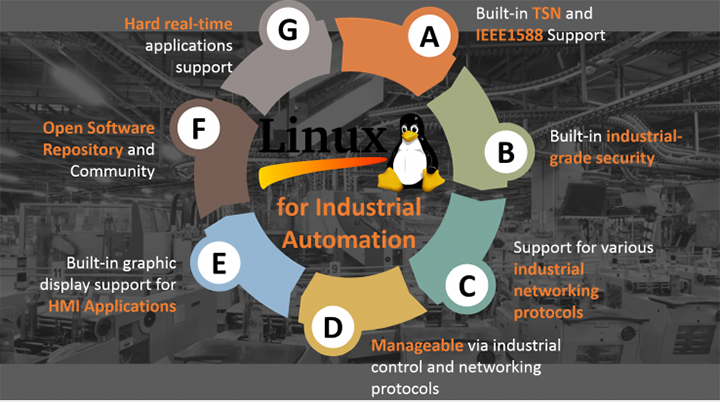Arthur C. Clarke famously wrote that any sufficiently advanced technology is
indistinguishable from magic. End users feel that magic the first time a
technology comes to market: imagine the reaction of the first regular person
to see fire, use an engine, listen to a radio or send an email. For
technology developers, the sense of magic comes later as layers of abstraction
pile up. The developer of the latest social-media chat app has no need to know
how the underlying operating system, computers, Internet and voice codecs
work. Knowledge of these details is unnecessary, and the developers’
productivity is far greater by building atop these layers developed by others.
For these reasons, system developers favor creating software over custom
hardware. The software realm is abstract—unconstrained by time, power,
cost, size, heat and other realities.
Sometimes, however, these realities intrude and software running on a server
proves inefficient and slow. This can happen even in cloud data centers, where
acres of servers provide the illusion of unbounded computing power, storage
capacity and network connectivity. As a result, cloud companies find it
advantageous to offload functions from servers’ main processors in
certain circumstances. At the same time, they do not want to entirely forgo
the benefits of software implementations or force changes to their
server-processors’ software stack.
Cloud companies, therefore, are supplementing or offloading their server
processors with companion processors or SoCs dedicated to key functions. These
functions are still software-based and unobtrusively slot into the
server’s software stack. This approach is becoming common in storage
applications, such as photo-sharing services, and networking applications.
Networking applications are less obvious, being hidden behind the scenes of
consumer-facing services. Think, however, about the wizardry that takes the
search query you type in your web browser and ultimately routes you to a
server half a continent away containing the answer to your question.
Storage Offload
In the cloud, solid-state drives (SSD) provide hot storage, and a single
storage system may serve more than 100 applications concurrently owing to the
cloud’s multitenancy. This concurrency grows as host processors scale
out by integrating more CPUs. Solid-state drives, however, optimize sequential
writes like their rotating-media forebears, on the assumption it was still
2005 and drives still serve a single workload. The result is that throughput
and latency for writes to the SSD are lower and more variable. Changes on the
host to adapt to SSD’s performance characteristics may need to be
reimplemented when the company installs the next generation of SSD. SSD
generations are shorter than that for host processors and track flash memory.
It’s 2018 now and cloud companies have slipped behind
technologies’ steering wheel. Among the technologies that have surfaced
is a contribution from Microsoft Azure to the Open Compute Project for a new
architecture for cloud SSD storage, Project Denali. Denali removes data-layout
functions from the SSD, redesigning them to address cloud workloads. They can
run on the host processor, consuming cycles otherwise used for applications.
Alternatively, they can run on an accelerator.
Microsoft’s General Manager of Azure Hardware Infrastructure, Kushagra
Vaid describes the concept in his
blog post
which includes this diagram:

Keen to help these companies usher in a better way to dish our
blogs
and
videos, NXP supports this architecture with an add-in card based on a Layerscape
processor. This design uses the multiple PCIe controllers integrated in
Layerscape
processors to connect to the host processor and M.2 SSD. The processor
performs the functions in the gray boxes in Vaid’s figure, the
functions removed from today’s SSD. As the block diagram below shows,
the card has two physical SSDs. The software on the Layerscape processor
combines their capacity and chops it up to present it as more than 100 virtual
drives to the virtual machines on the host. Owing to the hardware accelerators
Layerscape integrates, the NXP storage accelerator can also efficiently
compress and encrypt data—functions that would otherwise consume
host-processor cycles.

Storage accelerator based on a Layerscape processor.
Networking Offload
Cloud companies also turn to add-in cards to accelerate network functions.
Standard network interface cards (NICs) excel at basic Ethernet connectivity,
handling overlay protocols for a limited number of flows and offloading
stateless TCP functions from the host. Unfortunately for cloud service
providers, these NICs lack the flexibility to implement proprietary functions
or operate at a higher network layer, such as IPsec. They are also constrained
by the limited memory integrated in the NIC’s controller chip. Cloud
companies, therefore, have turned to intelligent NICs, also known as smart or
programmable NICs. As the latter name implies, these cards have both
general-purpose processing capability and dedicated network functions. The
easiest way to get this combination is to use a processor like those in the
Layerscape family, the whole purpose of which is melding general-purpose and
network-specific processing.
Layerscape processors with the NXP Data Plane Acceleration Architecture (DPAA)
can parse complex encapsulations, apply quality of service rules through
sophisticated queuing mechanisms and steer packets to the onboard CPUs or the
host processor. Off-chip memory eliminates a critical limitation of dedicated
NIC controller chips. The Layerscape SoC can also fully offload IPsec and
other security functions from the host. The saving in host CPU cycles by
offloading IPsec is significant. A 25-core server host may need to allocate
20% of its cores just to handle IPsec, which is uneconomical considering the
server processor could cost thousands of dollars. Just like the host
processor, Layerscape’s onboard CPUs can run Linux and offer cloud
companies the ability to easily move functions between the host CPU and the
SoC CPUs or to add their own special functions. The similarity ends there.
Integrating PCIe and Ethernet interfaces, Layerscape family members are an
economical, power-efficient and small-form factor solution to building an
iNIC NXP also supplies important enabling software and support services.
Cooler than each of the above examples is the combination of the two. Cloud
service providers can combine offloads in a single add-in card, selecting a
Layerscape processor with more CPUs and interface lanes to simultaneously
offload storage and networking functions. With that level of
integration, the cloud company could can say buh-bye to the expensive host
processor, adapting the add-in design to operate independently. In a surprise
turnabout, the Layerscape SoC, then, is the host of a storage-networking
system, playing not a supporting role in a system but the primary one. Its
lower power, better integration and selected hardware offloads make it a
better performing and more economical solution than a server host processor.
Such economics are ultimately as important as the improved efficiency and
performance gained from offloading functions to a Layerscape-based
accelerator. After all, cloud companies are big businesses and server
processors are expensive. Reducing their load frees cycles for other,
revenue-generating use. This reduction alternatively reduces the number of
machines that must be deployed, reducing cost. Like magic, SoC devices, like
Layerscape processors, are improving data centers. NXP is engaged with cloud
service providers, helping them use Layerscape SoC devices to bring their data
centers to the next level of performance and efficiency.






